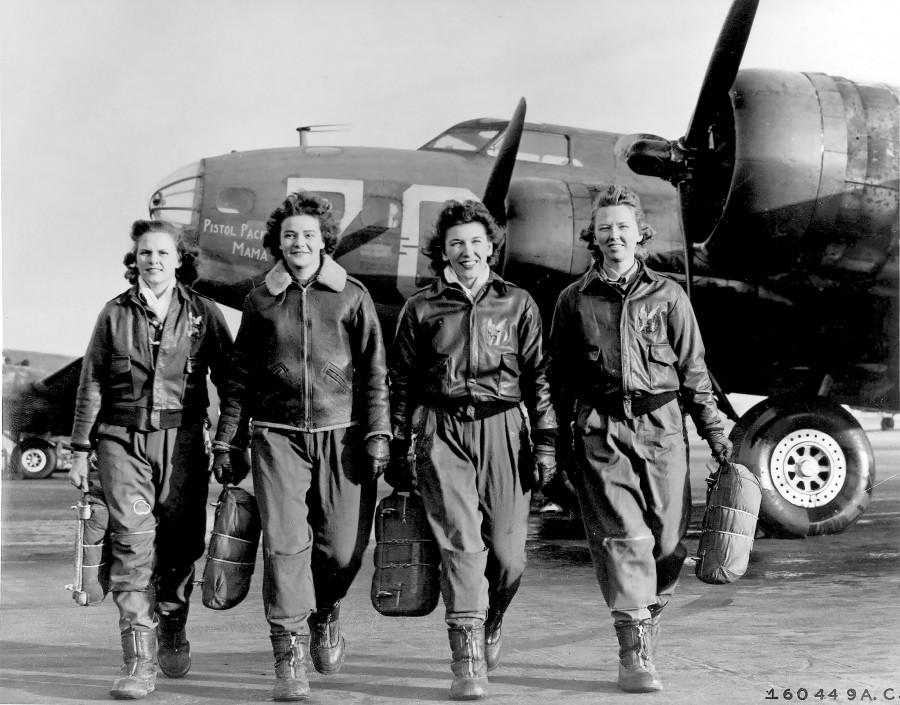WASPs still fighting for rights
Four WASPs return after a successful flight on their B-17, nicknamed Pistol Packin Mama, carrying their parachutes. As veterans from WWII, the WASPs have been fighting for the same benefits as any other veteran, including the right to be buried in Arlington.
February 19, 2016
During World War II, a select group of young women pilots became pioneers. They were the Women Airforce Service Pilots, WASP, the first women in history trained to fly American military aircraft. Medallions in the shape of wings were worn by the 1,074 women during WWII. Out of 25,000 who applied, 1,830 who were accepted and successfully completed the Women Airforce Service Pilot training program. Due to the shortage of pilots, the women flew noncombat missions to free up male pilots for combat. All who were part of the program were civilian volunteers. They flew almost every type of military aircraft, including the B-26 and B-29 bombers as part of the WASP program. They flew new planes long distances from factories to military bases and departure points across and around the country, and they towed targets to give ground and air gunners training with shooting with live ammunition. The WASPs expected to become part of the military during their service. Instead, the program was canceled after just two years on December 20, 1944.
The WASPs were granted veteran status in 1977 and have been eligible to have their ashes placed at Arlington National Cemetery with military honors since 2002. Unfortunately, in 2015 the Secretary of the Army at the time, John McHugh, decided to reverse the decision and ruled WASPs ineligible. Sophomore Melanie Padron said, “This is really ridiculous that this is even an issue.” It was said that the cemetery superintendent in 2002 had no authority to allow WASPs’ remains into the cemetery. Under federal law, WASPs are only eligible for burial at cemeteries run by the Department of Veterans Affairs, not Arlington National Cemetery, which is run by the Army. Army lawyers reviewed the rules in 2014 and determined that WASPs and other World War II veterans classified as “active duty designees” are not eligible for inurnment or the placement of their urns in an above-ground structure at Arlington. Many people do not understand the thought processes for the Army going out of its way to exclude this group of women from Arlington after they had been deemed eligible for over a decade without controversy. Junior Miria Solis said, “That makes me so upset. There is no reason for that to have happened.”
Arlington is running out of space, and the pressure has become greater on who is let in and who is not. Tight rules have spelled out whose ashes can be laid to rest there, and even tighter rules are in place for who is eligible for in-ground burial, which places the greatest strain on the cemetery’s accommodations. The WASPs are not asking for anything beyond what they earned, which is the eligibility for the placement of their ashes. As an additional argument, they say the impact on cemetery capacity would be minimal, given that few World War II veterans remain.












